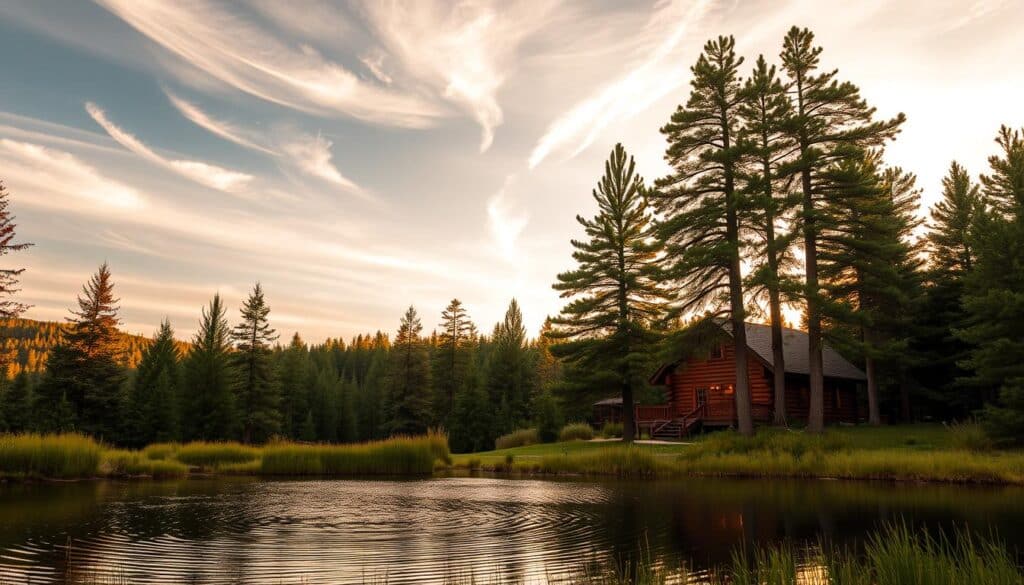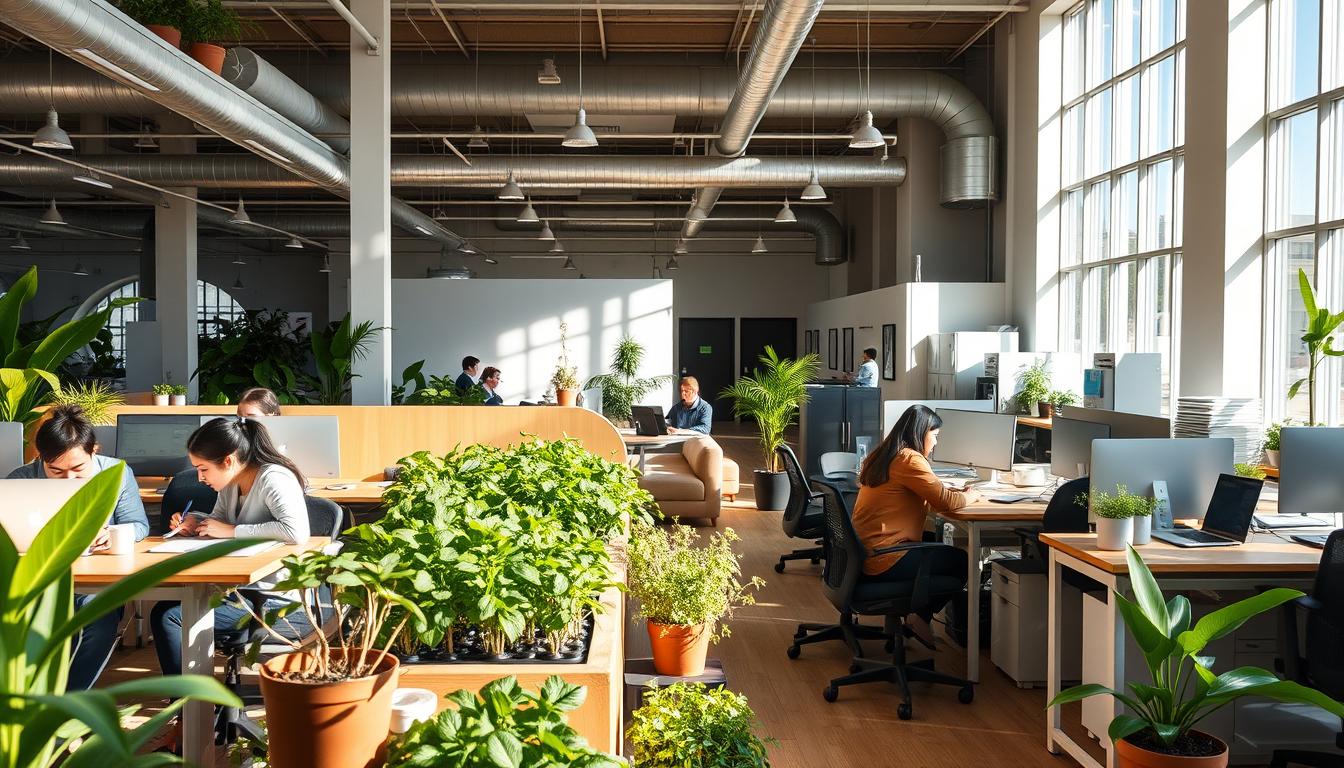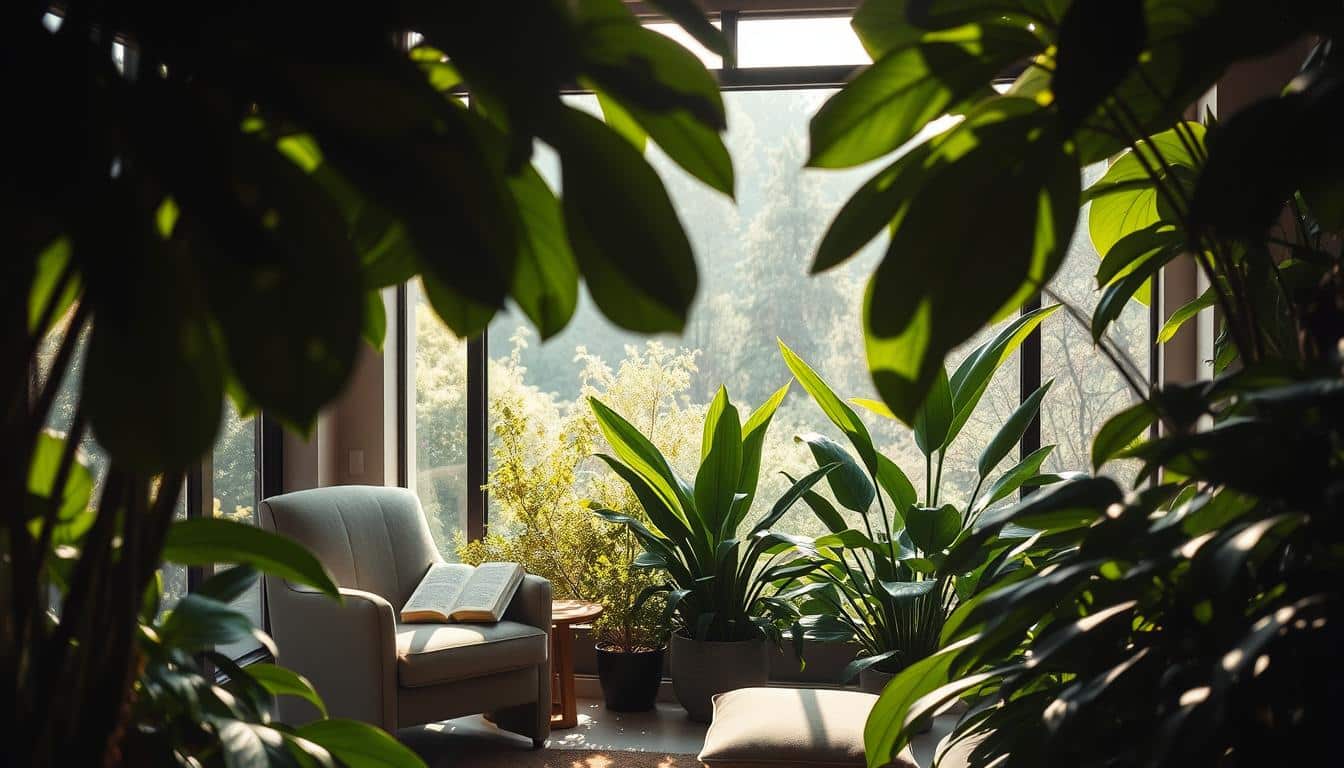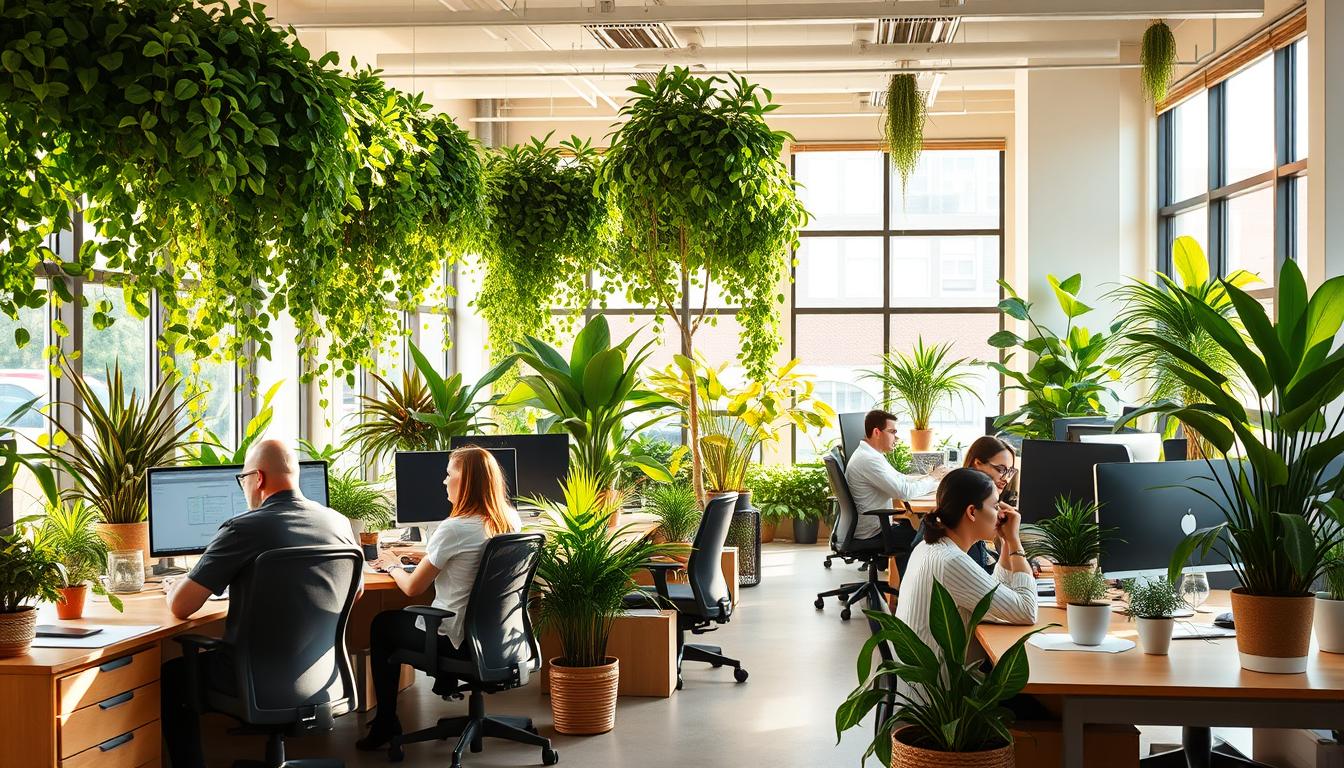In this time, the effects of climate change are more and more visible. Thus, using nature to help make city climates more comfortable is key. We’re looking at how natural elements make us feel about the climate, especially in cities. These places often battle issues like the heat island effect. As cities grow, adding green spaces and using the benefits of ecosystems is crucial. This method tackles climate risks and promotes sustainable urban growth. It does so through involving the community and enhancing life quality.
Introduction to Nature’s Role in Climate Comfort
Nature’s role in making cities more comfortable in changing climates is now widely accepted. Cities often struggle due to many people living close together. This makes them more likely to face problems from climate changes, like extreme heat and floods. By adding natural features to these areas, we can make the climate feel better and places nicer to live.
Nature-based strategies bring back a natural balance. They add green spaces, increase wildlife variety, and make the air cleaner. These actions are good for health and happiness. They also get communities involved in improving their local areas to deal with climate changes. Changing city designs to include parks, gardens on roofs, and trees along streets makes a big difference. It changes how people feel about their surroundings and climate.

Putting nature first in city planning leads to stronger natural areas. These areas can handle climate changes better and build strong bonds between people and nature. This whole approach helps us see how nature makes our city lives better and more enjoyable.
The Impact of Urbanization on Climate Perception
Urbanization plays a key role in how city dwellers feel about the climate. Cities tend to be warmer than rural areas due to the urban heat island effect. This leads to more health risks and higher costs for cooling.
When cities grow, they cover the ground with buildings and pavement. This means less natural cooling and fresh air. As a result, people may find the climate harsh, adding stress to their lives.
We need to tackle urban heat by adapting our cities. Adding green spaces can cool down cities and make people feel better about their environment. Investing in nature can bring communities together and make life better.
Understanding Nature-Based Solutions (NBS)
Nature-based Solutions (NBS) use natural processes to solve societal issues. They offer environmental, social, and economic advantages. They also make cities stronger. The European Commission sees NBS as actions that include nature in city planning. They aim to boost our well-being, help nature thrive, and make us less vulnerable to climate change.
Green practices, like urban parks and green roofs, let cities enjoy nature’s benefits. These benefits fight climate change, give us cleaner air, and increase greenery in cities. As cities grow, it’s key to adopt nature-based solutions. This helps make better, greener spaces for everyone.
Nature-Based Climate Comfort Perception: Definitions and Importance
Nature-based climate comfort deals with how people feel about their environment under different weather conditions. It shows why nature solutions (NBS) matter in cities, giving a guide on nature’s role in our comfort. Cities filled with more concrete than green spaces miss out on nature’s perks. These perks help us feel better and stand up to climate change.
Exploring Ecosystem Services in Urban Settings
Urban ecosystem services are key to a better life quality. They offer benefits we should pay attention to, such as:
- Improvement of air quality through plant absorption of pollutants and carbon dioxide.
- Provision of recreational spaces for enjoying nature.
- Promotion of biodiversity, supporting balance and resilience.
Knowing about urban ecosystem services is vital for cities wanting to add more nature-based solutions. Boosting these services can make cities more comfortable and healthy for everyone.
Citizen Engagement in Climate Adaptation Efforts
How involved communities are matters a lot in climate change plans. Getting people into talks and plans for green spaces links them closer to their surroundings. Cities gain by:
- Boosting the value seen in NBS for better urban ecosystems.
- Creating solutions that match what the community needs and wants.
- Building a common goal to keep and better natural areas for the future.
Making residents feel like they own a part of their environment gets them to help more. Working together makes nature-based solutions better and increases climate comfort for everyone.
The Benefits of Green Infrastructure (GI) in Cities
Green infrastructure (GI) is key in making cities more sustainable. It tackles environmental issues by blending natural spaces into city designs. This brings vital ecosystem benefits, making life better for people.
GI helps cool cities during hot summers by reducing heat. It also cleans the air, as plants filter pollutants and take in carbon dioxide. This makes the urban environment healthier.
Investing in green infrastructure boosts economic health too. It raises property values and draws in businesses and tourists. These green spaces also encourage people to come together, providing places for fun and community.
Studies show that GI helps cities face climate change better. It’s a forward-thinking part of urban planning. It aims at sustainability, putting people’s well-being and nature’s health first.
Connecting Green Spaces and Mental Well-Being
Urban green spaces play a key role in making cities healthier places to live. They help reduce stress, improve moods, and promote relaxation for everyone. As cities get bigger, it’s vital to mix in these natural areas to combat mental health issues.
People living in cities really value greenery, not just because it looks good, but because it makes them feel better. Parks, gardens, and natural landscapes offer a peaceful break from city noise. Being around green spaces can make people’s mental health better over time.
Pushing for green projects in cities helps people connect more with nature. These efforts lead to healthier living and better life quality for city residents. By focusing on green spaces, communities can put mental well-being first. This helps everyone.
Research Insights on Nature and Climate Experience
Studies show how people view city green spots connect with how they feel about climate comfort. Folks appreciate the beauty of nature in cities. This beauty boosts how we interact and can even heal us. Feeling good in cities often depends on these green spaces.
Citizens’ Views on Urban Greenery and Comfort Levels
Green parks in cities make people feel more comfortable. Many enjoy the calm and fun these spaces offer. They help us get away from city noise, making us happier and more connected.
Economic Implications of Nature-Based Solutions
Putting money into city green areas has big economic pluses. Studies show it saves costs and boosts local economies. Greener cities see higher property values and business gains. Plus, parks keep folks healthier, cutting healthcare costs.
Examples of Successful NBS Implementations
In cities worldwide, nature-based solutions boost urban climate comfort. New York City, for example, uses green roofs on its buildings. These not only enhance insulation but also cut down urban heat. Philadelphia has also jumped on board by creating urban gardens. These increase biodiversity and give residents green spaces to enjoy.
Milan’s vertical forest project stands out internationally. It mixes residential life with nature, decking out towers with trees and plants. This not only cleans the air but also provides a unique home environment. These cases show the value of nature-based solutions in making cities sustainable.
These city examples show how nature can improve life while tackling climate issues. By adopting these strategies, other cities can boost their climate resilience and comfort. This could inspire more areas to try out their own nature-based solutions.
Conclusion
Using nature to fight climate change in cities is very important. As cities get bigger, they face more climate change issues. Adding green spaces helps keep the climate comfortable and supports city life.
It takes everyone working together to make the most of green solutions. When people and leaders work together, cities become stronger. Getting involved helps people feel like they belong and allows them to improve their cities.
In the future, sharing research and ideas will be key. Cities focusing on green solutions will create a better future. This means a healthier planet for everyone.



